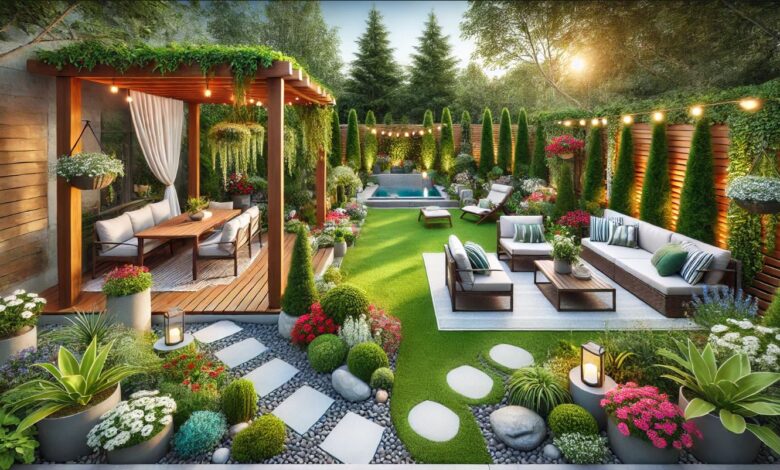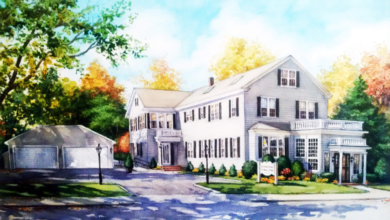Outdoor Projects for Beginners: Easy DIY Ideas to Get You Started

Embarking on an outdoor project can be an exciting and rewarding experience, whether you want to enhance your garden, add functional features to your backyard, or enjoy spending time outside. For beginners, starting a DIY outdoor project might seem daunting, but with the right approach, tools, and guidance, it can be manageable and fun. This article provides a comprehensive guide to outdoor projects for beginners, with easy-to-follow ideas that will help you get started, transform your space, and build your confidence along the way.
Why Should You Take On an Outdoor Project?
Outdoor projects offer numerous benefits for your home and your well-being. When you take on DIY projects outdoors, you can:
- Enhance the beauty and functionality of your space: Transform your backyard, patio, or garden into a relaxing oasis, or create functional areas like outdoor kitchens, fire pits, or vegetable gardens.
- Save money: By tackling outdoor projects yourself, you can save on labor costs while gaining valuable skills.
- Boost your physical health: Many outdoor projects involve physical labor, which can be great exercise and help improve your strength, flexibility, and overall health.
- Increase the value of your home: Well-executed outdoor projects, such as creating a beautiful landscape or adding outdoor living spaces, can increase the value of your home, making it more attractive to potential buyers.
Let’s explore some easy DIY outdoor project ideas to help beginners start their outdoor transformations.
Create a Raised Garden Bed
Why It’s Great for Beginners:
Building a raised garden bed is a relatively simple and rewarding project for beginners. It allows you to create a small, organized garden to grow vegetables, herbs, or flowers, even if your yard has poor soil. Raised beds provide better drainage, reduce weeds, and can be customized to suit your space.
Materials Needed:
- Lumber (cedar or redwood is ideal for longevity)
- Screws or nails
- A drill or hammer
- Gardening soil and compost
- Seeds or seedlings of your choice
How to Do It:
- Select a sunny spot in your yard with at least 6 hours of sunlight daily.
- Decide on the size of your raised bed. A typical size is 4 feet by 8 feet.
- Cut the lumber to the desired length and secure the pieces together to form a rectangular frame.
- Fill the bed with a mixture of gardening soil and compost.
- Plant your seeds or seedlings, and water regularly.
Pro Tip: For a low-maintenance garden, consider adding a weed barrier underneath the bed or use a soaker hose to keep the plants hydrated.
Build a Simple Fire Pit
Why It’s Great for Beginners:
A fire pit is an excellent outdoor project for beginners. It offers a cozy spot to gather around with friends and family. It can be built on a weekend, and with minimal tools and materials, you can create a stylish, functional feature that adds ambiance to your yard.
Materials Needed:
- Stone or fire-rated bricks
- Gravel or sand
- Firepit ring (optional)
- A shovel or spade
- A level
How to Do It:
- Choose a location for your fire pit. Ensure it is far from flammable structures like trees, fences, or sheds.
- Dig a hole about 6 inches deep, removing grass or debris from the area.
- Place a layer of gravel or sand at the bottom of the hole for drainage.
- Start stacking the stones or bricks around the perimeter, creating a circular wall.
- Once the walls are built, ensure the firepit is level and stable.
- Add decorative rocks or gravel around the fire pit to finish the look.
Pro Tip: If you’re building a more permanent fire pit, consider adding a fire pit ring to help maintain the shape and prevent the stones from shifting over time.
Create a Vertical Garden
Why It’s Great for Beginners:
A vertical garden is the perfect solution if you’re limited in space but still want to grow plants. It allows you to utilize wall space or fences for growing climbing plants, flowers, or herbs, and it’s an easy project that doesn’t require a lot of materials.
Materials Needed:
- Wooden pallets, planter boxes, or PVC pipes
- Potting soil
- Plants of your choice (e.g., strawberries, tomatoes, climbing beans, or flowers)
- Nails or screws (if using pallets)
How to Do It:
- Secure a wooden pallet to a fence or wall, or use a large planter box.
- Fill each compartment or section with potting soil.
- Plant your seeds or seedlings in each section.
- Water regularly, and consider installing a drip irrigation system to make watering easier.
Pro Tip: Use a variety of plants with different heights and colors for a visually appealing and diverse vertical garden.
Install Outdoor Lighting
Why It’s Great for Beginners:
Installing outdoor lighting is an easy way to enhance the atmosphere of your yard or patio. Not only does it make your space more inviting, but it also adds an element of safety, especially if you enjoy outdoor activities after dark.
Materials Needed:
- String lights or solar-powered lights
- Extension cords (if necessary)
- Hooks or clips for hanging lights
How to Do It:
- Decide where you want to place the lights. Consider draping them along fences, trees, or around a seating area.
- If using string lights, hang them with hooks or clips along the desired location.
- Solar-powered lights can be placed in garden beds or along walkways, soaking up sunlight during the day.
- Consider adding motion sensors or LED spotlights to highlight key areas for added effect.
Pro Tip: Solar lights are an energy-efficient option that doesn’t require wiring or an outlet.
Build a Simple Pathway
Why It’s Great for Beginners:
A pathway is a functional outdoor project that is also aesthetically pleasing. Whether you’re looking to create a defined walking route through your garden or add an attractive feature to your backyard, a simple pathway can be an easy DIY project.
Materials Needed:
- Flagstone, pavers, or gravel
- Sand or gravel base
- A shovel or trowel
- A level
How to Do It:
- Mark the path you want to create using spray paint or string.
- Remove any grass or debris along the path, and dig down to a depth of about 3 inches.
- Add a layer of gravel or sand to create a stable base.
- Lay your flagstones, pavers, or gravel along the path, ensuring they’re level and secure.
- Fill the gaps with small pebbles or sand for a polished look.
Pro Tip: If using flagstones, leave a little space between each stone to create a “stepping stone” effect, filling the gaps with moss or ground cover for a natural look.
Conclusion
Embarking on outdoor projects as a beginner is an exciting opportunity to develop new skills, improve your space, and enjoy the great outdoors. Whether you build a raised garden bed, install a fire pit, or add a vertical garden, each project will bring a sense of accomplishment. Start with one of the easy DIY ideas mentioned above, and don’t be afraid to experiment and make the projects your own. The more you practice, the more confident and capable you’ll become at tackling more extensive and complex outdoor projects.
Frequently Asked Questions (FAQs)
- What is the most straightforward outdoor project for beginners? Building a raised garden bed is one of the easiest outdoor projects for beginners. It requires minimal tools and materials and is a great way to start gardening while improving your backyard.
- How can I make my outdoor space more inviting without spending much money? Simple, low-cost projects like installing outdoor lighting, creating a pathway with gravel, or planting a few flowers can dramatically improve your outdoor space without breaking the bank.
- How long does it take to build a fire pit? Depending on the complexity of the design, a simple fire pit can typically be completed in one weekend. A basic fire pit with stone or brick walls can be constructed in 3-5 hours.
- Do I need advanced skills to build a vertical garden? No, it’s a beginner-friendly project. With simple materials like wooden pallets, planter boxes, or even PVC pipes, anyone can create a vertical garden with essential tools and minimal experience.
- Can I use solar lights instead of electrical ones? Yes, solar-powered lights are a great alternative to electrical ones. They are easy to install, energy-efficient, and don’t require any wiring, making them ideal for beginners.
You May Also Read:https://usabestweekly.com/




